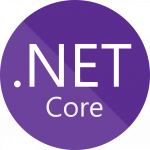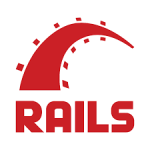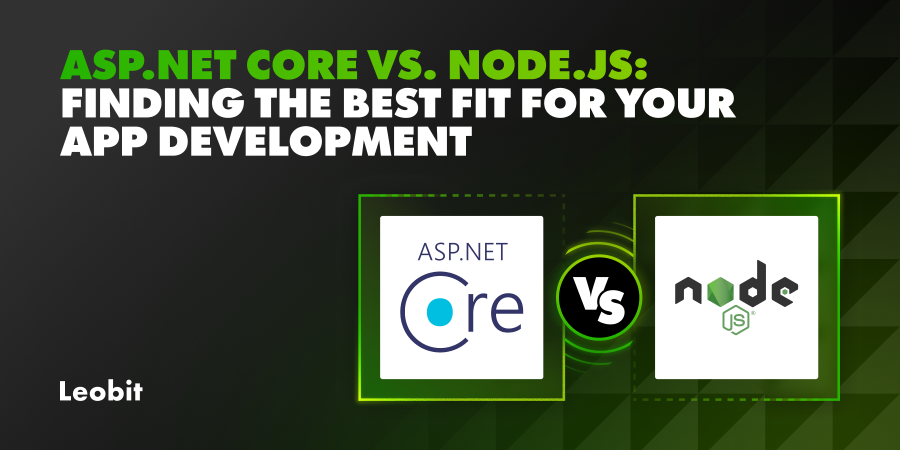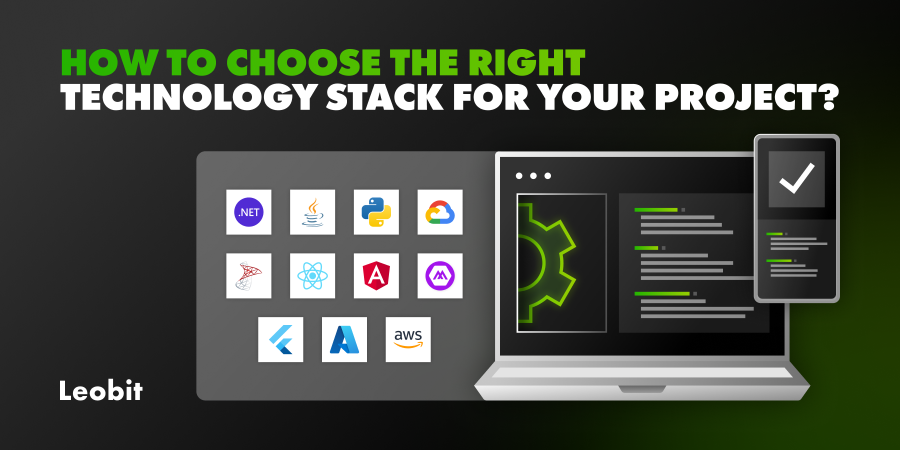If you plan to start application development but don’t know what framework to favor, analyze its advantages and disadvantages. There is no universal solution that can cover all the development needs and serve as a basis for each and every application. In some cases, Ruby software development is more appropriate than .NET. You just need to know when. Here are the main capabilities of all the analyzed frameworks to guide you.
.NET
With this cross-platform and portable framework, you can build applications that run equally smoothly on Windows, Linux, and macOS. Whereas Node.js is based on JavaScript and commonly used with TypeScript for modern development, .NET is primarily used with C#, making it ideal for teams already invested in the Microsoft ecosystem. This is one of the key differences between .NET and Node.js that may affect your choice of the framework.
Apart from that, .NET supports a wide range of application types, so you can scale an existing project, pioneering new domains. For example, you can first leverage .NET to build a desktop solution and later rely on the same technology to develop a mobile, gaming, or IoT product using frameworks like .NET MAUI or Unity.
.NET also makes the software more secure. This framework offers reliable mechanisms for user authorization, authentication, data protection, and attack prevention. ASP.NET Core Identity enables software engineers to integrate an app with all key authentication providers.
Recommended for
Use .NET for cross-platform apps that are likely to scale in the future and require high performance and security. Among the compared frameworks, this one stands out in terms of enterprise-grade reliability. That’s why tech companies often prefer .NET for complex, long-term, mission-critical systems built in C#. If you want to explore the possibilities of tailored solutions using this technology, check out our guide on custom .NET application development.
Not recommended for
.NET doesn’t support some legacy libraries or GUI technologies like Windows Forms and WPF on non-Windows platforms. Make sure to check the compatibility of your intended UI stack before including it in your tech stack.
Node.js
This runtime environment is a full-stack JavaScript solution for both client- and server-side applications. Therefore, Node.js developers can write the whole web application in JavaScript. This enables tech companies to build fast and lean product teams without splitting backend and frontend roles.
Node.js supports high-speed asynchronous coding and is based on Google’s V8, one of the fastest JavaScript engines. The support of non-blocking I/O operations additionally increases the speed of code execution.
Recommended for
Node.js is a perfect match for real-time and streaming applications like chat apps, video platforms, or e-commerce stores. It is scalable enough to support rapid user growth without major rewrites, making it ideal for fast-growing SaaS startups.
Not recommended for
Think twice before using Node.js for CPU-intensive apps requiring complex processing, such as machine learning or video rendering. .NET may be a better fit for such performance-heavy cases.
Ruby on Rails
RoR has been a trendy framework for many years due to its ease of use and multipurpose nature. It supports RubyGems, a package manager that simplifies the distribution of Ruby programs and the installation of gems. This makes RoR a great match for creating applications of simple or medium complexity within the shortest time. It might be less effective for scalable applications with a high load since RoR doesn’t perform as good as .NET or Node.js.
Thanks to ready-to-use components, third-party RoR code is usually consistent and clean. It’s also very concise and minimizes repetitive tasks, which cuts the development time and makes the coding process more cost-efficient for Ruby on Rails developers.
Recommended for
Opt for Ruby on Rails if you don’t plan to super-scale your app or process high traffic volumes. RoR development is also a great solution for CPU-light applications that require a fast MVP — including marketplaces, internal tools, and content-based apps.
Generally, the Ruby on Rails framework is used for web, mobile, and desktop app development, e-commerce, and content management systems.
Not recommended for
Large projects with enormous traffic. In this case, Node.js or .NET may offer more control and better performance. RoR also requires experienced developers, as the high level of abstraction may lead to architectural missteps when handled by beginners.


















